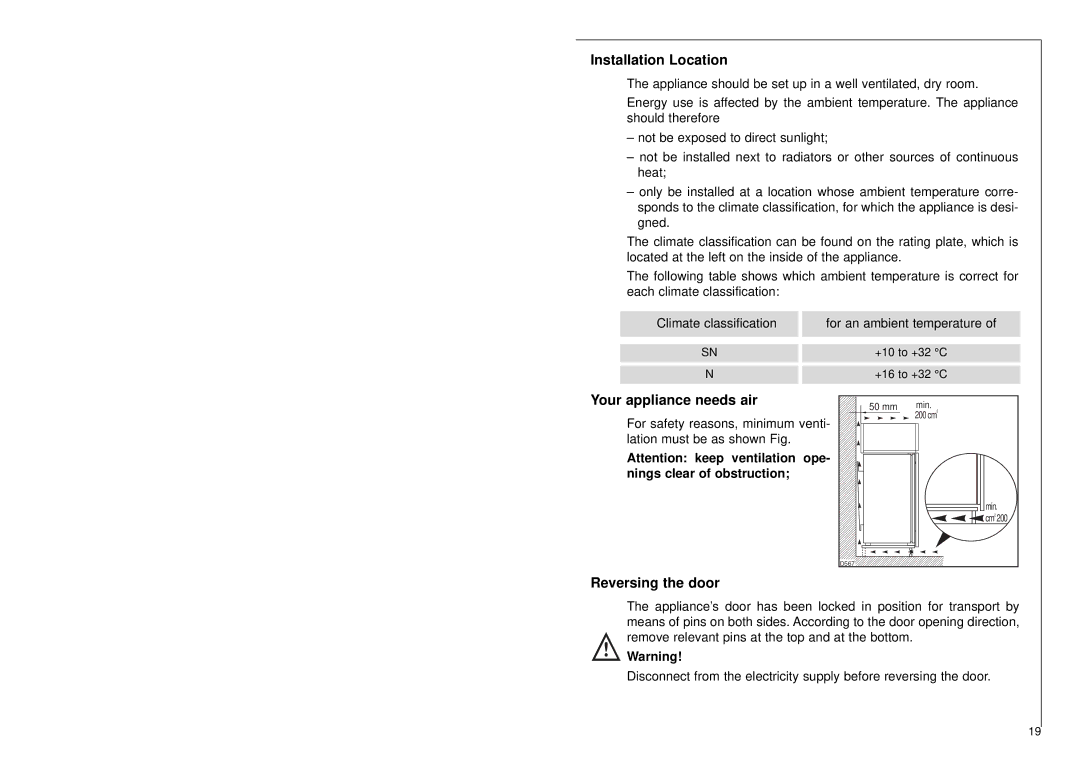SANTO 3244-4 i specifications
The Electrolux SANTO 3244-4 i is a top-tier refrigeration appliance designed to enhance kitchen storage while ensuring food preservation at optimal conditions. This model showcases a blend of modern aesthetics, cutting-edge technology, and user-friendly features that appeal to a wide range of consumers seeking efficiency and style.One of the standout features of the SANTO 3244-4 i is its impressive storage capacity. With ample space, the refrigerator compartment allows for the organization of a family’s groceries, making meal preparation both efficient and convenient. The adjustable shelves provide flexibility in how users can store various items, from tall bottles to delicate fruits. The integrated door bins are perfect for keeping frequently used items easily accessible.
The SANTO 3244-4 i incorporates advanced cooling technology, such as No Frost, which eliminates the need for manual defrosting. This innovative system circulates cold air evenly throughout the refrigerator and freezer compartments, ensuring consistent temperatures and preventing ice buildup. As a result, users can maintain food freshness longer while minimizing maintenance efforts.
Energy efficiency is another hallmark of the Electrolux SANTO 3244-4 i. Rated highly on the energy efficiency scale, this appliance employs smart technologies that minimize energy consumption, which translates to lower electricity bills. The EcoMode feature optimizes energy usage by adjusting temperatures during times of low usage, making it ideal for environmentally conscious consumers.
The refrigerator is also designed with hygiene and safety in mind. It features antibacterial surfaces and a specially designed air filtration system that helps to reduce odors and bacteria, ensuring a healthier storage environment for food. The precise temperature control allows users to set and maintain ideal conditions for various food types, maximizing both taste and freshness.
Furthermore, the sleek built-in design of the SANTO 3244-4 i allows it to blend seamlessly into modern kitchen layouts, enhancing both functionality and aesthetics. The appliance is equipped with intuitive controls, making it easy for users to adjust settings as needed.
In conclusion, the Electrolux SANTO 3244-4 i is a sophisticated refrigerator that combines spacious storage, advanced cooling technology, and energy efficiency. Its well-thought-out features cater to the needs of modern households, making it an excellent choice for those looking to invest in quality kitchen appliances. With the SANTO 3244-4 i, Electrolux continues to uphold its reputation for excellence and innovation in refrigeration solutions.

